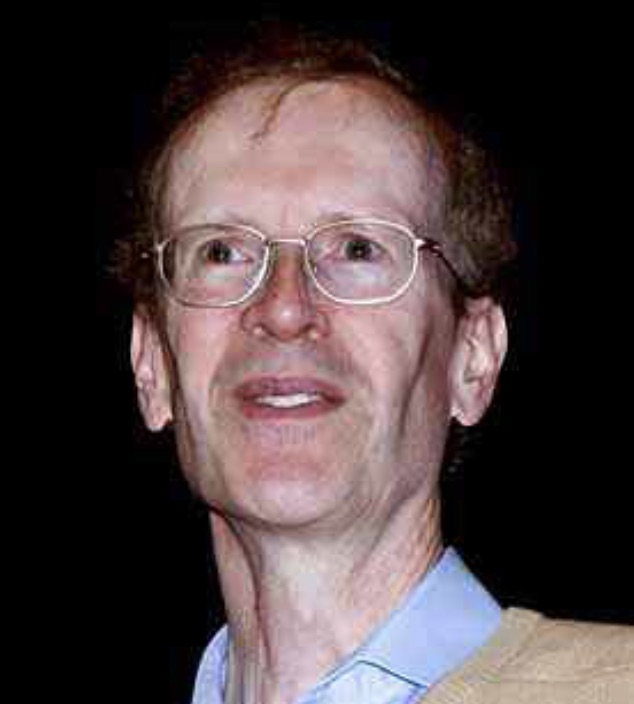
Andrew John Wiles was born on April 11, 1953 in Cambridge, England. Between age 2 and 6, Andrew attended school in Nigeria where his father, had been appointed lecturer in New Testament Studies. When his father became Dean of Clare College in 1959, the family returned to Cambridge, and Andrew attended King’s College School. where he learned mathematics from Mary Briggs, the wife of headmaster David Briggs. It was at this time that the young Andrew first encountered Fermat’s Last Theorem, in Eric Temple Bell’s classic book The Last Problem.
A Brief Aside on Fermat’s Last Theorem
Pierre Fermat (1601–1665) was a French lawyer who studied mathematics as a hobby. The statement of Fermat’s Last Theorem, referred to above, was a note scrawled in the margin of one of Fermat’s books around 1637. It contained the statement …it is impossible for any cube to be the sum of two cubes, or in general for any number that is a power greater than the second to be the sum of two like powers. I have discovered a truly marvellous demonstration of this proposition that this margin is too narrow to constrain.
In general, Fermat’s Last Theorem asserts that for any positive integer, n > 2, there do not exist positive integers x, y, z that satisfy the equation: xn + yn = zn.
The challenge to prove or disprove Fermat’s Last Theorem was enhanced by rewards offered for its solution. In 1815 and 1860, the French Academy of Sciences offered a gold medal and 300 francs for a proof and in 1908, the German Academy of Sciences offered a prize of 100, 000 marks— a fortune in pre-inflationary Germany! In spite of these inducements, the conjecture defied proof.
Back to Andrew Wiles
This introduction to the problems of mathematics ignited Andrew’s interest in number theory and he later reflected:
I happened to be looking in my local public library, and I found a book on maths and it told a bit about the history of this problem, that someone had resolved this problem 300 years ago, but no one had ever seen the proof. No one knew if there was a proof. And people ever since had looked for the proof. And here was a problem that I, a ten-year-old, could understand, that none of the great mathematicians in the past had been able to resolve. And from that moment, of course, I just tried to solve it myself. It was such a challenge, such a beautiful problem. This problem was Fermat’s Last theorem.
At age 12, Andrew enrolled at The Leys School, a prestigious institution in Cambridge, where his teacher, who had a Ph.D. in number theory, nurtured his interest by introducing him to the classic textbooks in this field. In 1971, at the age of 18, Andrew enrolled in Merton College, Oxford where he studied geometry, logic and an assortment of branches of mathematics outside number theory, while number theory remained his true passion. When he graduated from Oxford with a B.A. in 1974, he entered Clare College, Cambridge to embark on a doctorate in number theory.
In 1975, John Coates arrived at Cambridge and became the supervisor for Andrew’s Ph.D. thesis. His thesis involved elliptic integrals and did not address Fermat’s last theorem, because Andrew Wiles did not want to gamble his postgraduate degree on the successful solution to a problem that might be unsolvable or undecidable. He would return to that challenge on a later day.
During the next 5 years, Andrew Wiles continued his research at Cambridge and Harvard, receiving his doctorate in 1980 for his thesis Reciprocity laws and the conjecture of Birch and Swinnerton-Dyer. The following year, Wiles went to the Institute for Advanced Study in Princeton, and in 1982, was appointed to a professorship at Princeton. Wiles spent the academic year 1985–86 in France where he continued his study of elliptic curves, modular forms, and their connection to Fermat’s Last Theorem. Around that time he was engaged in a conversation with a friend that sparked a groundbreaking epiphany:
I was at a friend’s house sipping iced tea early in the evening, and he just mentioned casually in the middle of a conversation, “By the way, did you hear that Ken Ribet has proved the epsilon conjecture?” And I was just electrified. I knew that moment the course of my life was changing, because this meant that to prove Fermat’s Last Theorem, I just had to prove the Taniyama-Shimura conjecture. From that moment, that was what I was working on. I just knew I would go home and work on the Taniyama-Shimura conjecture.
On June 23, 1993, Dr. Andrew Wiles of Princeton University completed his final lecture at a Cambridge University Conference with the statement, “I better stop there”. The audience of the world’s greatest number theorists was incredulous — paralyzed for a few seconds. As the significance of the chalkboard equation registered, the silence gave way to a thunderous applause. It seemed that Andrew Wiles had finally proved Fermat’s Last Theorem–the most famous conjecture in Number Theory that had eluded the greatest mathematicians for over 350 years!
In the year following Wiles’ announcement of a proof, some flaws in the argument were found, but in the ensuing two-year period, the argument was amended and there is now general agreement among number theorists, that the most famous conjecture in Mathematics is now a theorem! Reflecting on his lifelong struggle, Andrew Wiles announced, I had this rare privilege of being able to pursue in my adult life, what had been my childhood dream. Wiles’ proof of Fermat’s Last Theorem earned hin a special place in the history of mathematics as a mathematical problem-solver par excellence.
